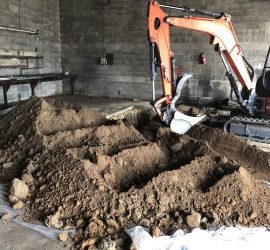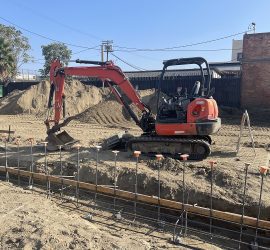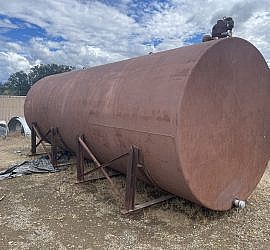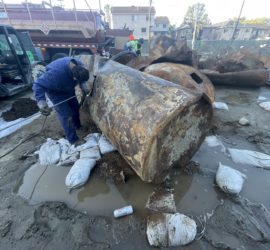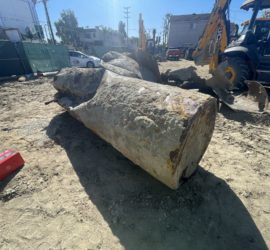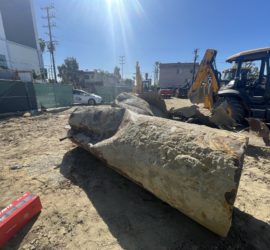Underground Storage Tank Removal Contractor
An underground storage tank removal contractor specializes in the technical process of excavating and decommissioning old fuel and oil storage tanks. Getting a “No Further Action” letter from the primary environmental regulation agency is the ultimate goal. To do so, the underground storage tank excavation process requires compliance with modern environmental laws, health and safety standards, and contamination cleanup standards. Additionally, various permits and data report submissions are necessary, in accordance with modern environmental geology and geological engineering guidelines. Updated April 9, 2024.
UST Removal & UST Excavation
Underground tank removal by excavation (or UST removal by UST excavation) is specifically the unearthing and construction portion of a UST abandonment project. This is one portion of the overall underground storage tank removal process, which entails the digging of a UST under strict environmental agency oversight and guidelines. UST excavation involves numerous tasks, from the initial phases of planning and permitting to the actual fieldwork of excavation, and the final stages of backfilling and compaction testing. Permit agency oversight is mandatory for underground tank removal. Furthermore, the process generates hazardous waste and debris, which need legal transportation and treatment. Lastly, soil contamination testing, backfilling, compaction, and reporting with professional geological certification, must occur in order to achieve case closure and a “no further action” letter.
In fact, agencies from all jurisdictions require a minimum criterion for the UST abandonment process. For example, a remedial action plan, special licensing for hazardous waste disposal, professional geologist supervision, contamination soil testing, and more. Furthermore, the process generates an abundance of waste on the record. As a result, all UST excavation and UST removal projects comprise a disposal paper trail and certification documents. Additionally, proper backfilling procedures are in place to prevent future collapses or sinkholes. Overall, the criteria are necessary to correctly abandon USTs and determine the need for environmental remediation.
Discovering the Underground Storage Tank
Typically, underground storage tanks come to light during environmental due diligence study periods. For instance, a Phase 1 Environmental Site Assessment might identify records of a fuel-containing UST on-site. Afterward, a Phase 2 Environmental Site Assessment might identify the physical location of the underground storage tank and recommend removal. However, without the ability to reference proper UST system records, contractors cannot be certain about subsurface conditions. Thus, a geophysical survey helps close such gaps by reasonable presumption.
Geophysical Survey to Locate the UST & Other Pipes
Because USTs are underground and are not easily observable, a geophysical survey is necessary to delineate the lateral and vertical extent of the subsurface tank. Using ground-penetrating radar and other equipment, a geophysical survey company can assist in estimating the size, capacity, and depth of the subsurface feature. This knowledge helps with the tank registration and permitting process, as well as the project planning and waste disposal process.
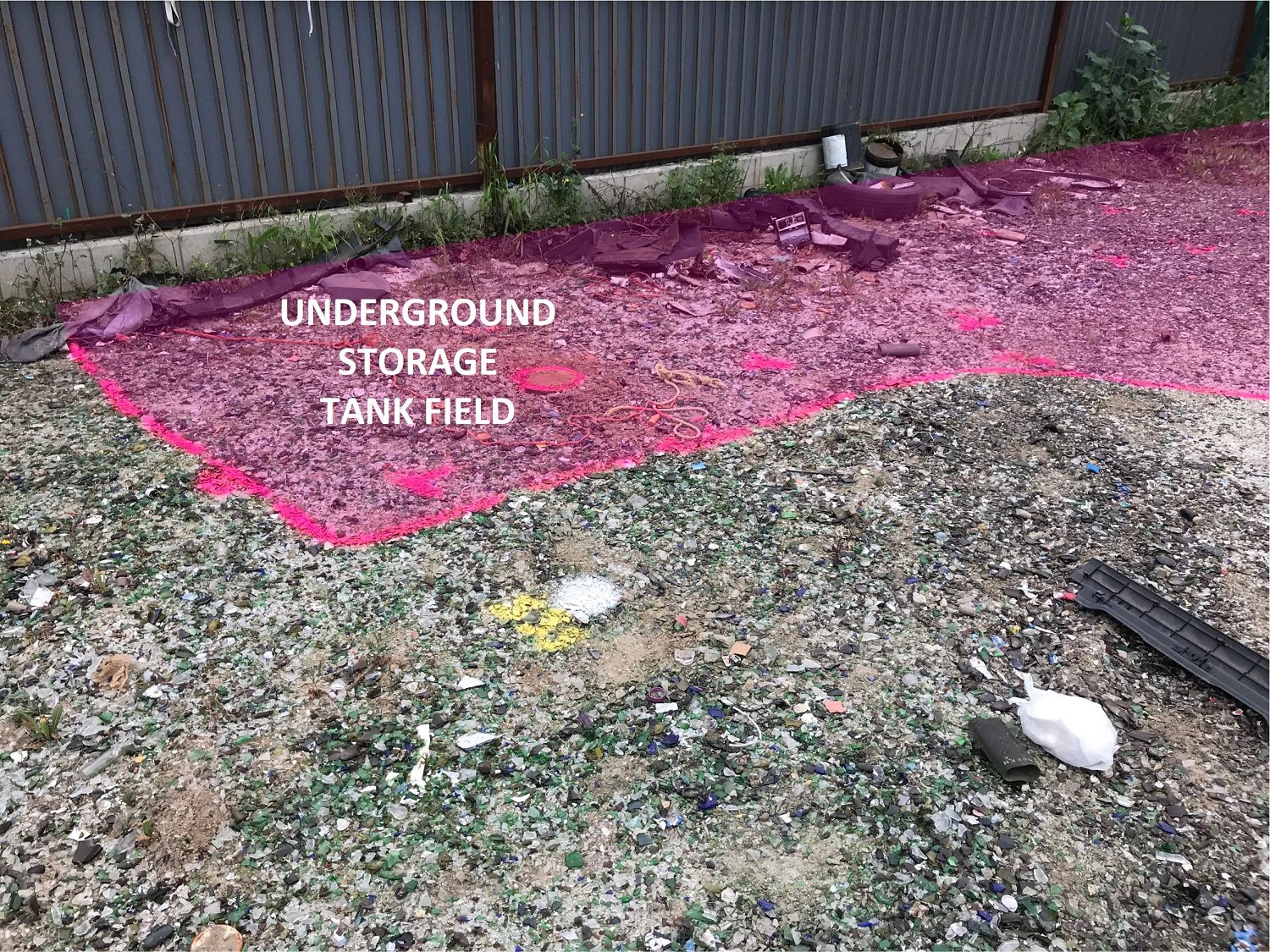
About Underground Storage Tank Removal, Excavation & Earthwork
UST Removal Team & Protocol
Special licensing excavators, hygienists, geologists, and engineers are required to legally remove underground tanks. In most cases, operators will try to simplify the UST excavation process, by ramping the sidewalls of an excavation pit. In fact, this method is not only cheaper but safer. However, some projects have complex conditions and additionally require a geotechnical specialist for proper lateral support and shoring. Ultimately, this requirement will be based on the requirements of local building and grading department codes.
Certifications for UST Abandonment
Additionally, all workers must comply with the OSHA Hazardous Waste Operations and Emergency Response Standard (HAZWOPER) to be on-site. Similarly, all on-site personnel must complete site-specific health and safety training, with records of compliance available anytime. Lastly, geologists classify and categorize all the waste from the underground tank removal process, in order to legally transport and dispose of it.
UST Excavation
Excavators carefully remove the soil surrounding the underground storage tank, creating a pit in accordance with the Occupational Safety and Health Administration (OSHA) Standards. Next, (unless the pit includes ramping) technicians install the proper lateral support mechanisms and lagging systems, alongside the newly cut walls. To prepare for extraction, professional welders and ironworkers then secure all lifting modules to the UST. Next, a crane operator safely removes the tank from the subsurface and mounts it atop a truck. Each field technician must have all appropriate state, federal, and local certifications for these tasks.
Underground Tank Removal & Extraction
Additionally, crane operators and welders with special certifications are occasionally required to safely extract the tanks from the subsurface. Moreover, all field personnel must have various state and OSHA certifications to be onsite during dig-out projects. Hazardous waste transportation, in this case, requires proper licensing, and all disposal or treatment facilities must have government registration and approval. Lastly, professional engineers must certify the back-filling materials to undergo proper compaction.
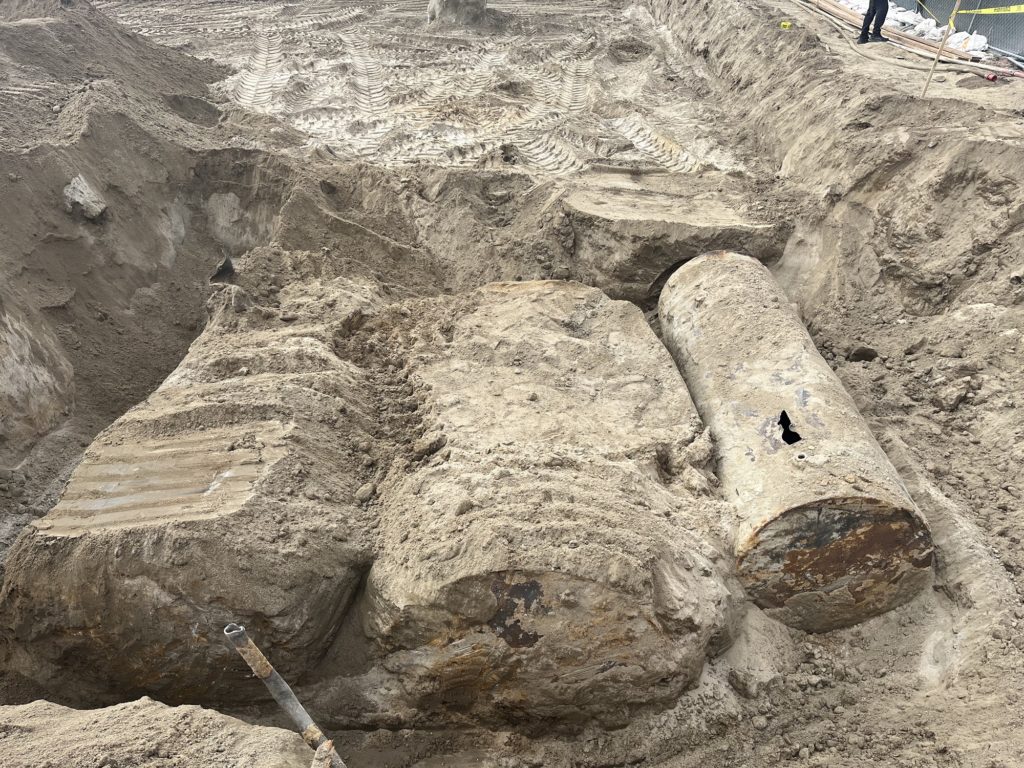
Underground Storage Tank Abandonment and the UST Removal Procedure
The underground storage tank removal process differs from site to site. Many site variables play into the scope of work and methodologies to apply. For instance, a site with minimal lateral space may require shoring to laterally support the surrounding earth during excavation. Whereas a site with lots of space may not. The following steps are the general steps of an underground tank removal project.
Step 1 – Apply for Local and State Permits
This is the initial task, which can vary in cost, time, and effort, depending on jurisdiction and tank characteristics. In fact, some jurisdictions involve multiple agencies that each require their own permits and oversight procedures for underground tank removals. For instance, in most California jurisdictions, the UST removal process requires permits from local city building departments, local county public works departments, and State Environmental Protection Agencies. Additionally, each entity usually requires a field inspection process, as well as a technical report with certification by professional geologists and contractors.
Step 2 – Prepare a Site-Specific Soil Management Plan, Health & Safety Plans & Fieldwork Schedule
To meet regulatory agency procedures and ensure safety during fieldwork, underground tank abandonment projects also require a soil excavation management plan and a construction health and safety plan. Project managers prepare these plans simultaneously to coordinate a project schedule.
Step 3 – Notify Local and State Permitting Agencies About Starting the Project
Upon the approval of all necessary permits, environmental consultants must provide each agency with a 72-hour or 42-hour project start notification. The notification is a legal requirement, and failure to do so may result in penalties and ineligibility for case closure.
Step 4 – Pump and Extract all Remaining Liquid Inside the UST
The first fieldwork task in the UST abandonment process is the pumping and removal of liquids within the UST. Residual fuels and oils are flammable and dangerous. Thus, they need to be fully removed prior to the start of any excavation. Technicians typically access the tanks via the fill ports, which already surface the ground. And tanker trucks with vacuum pumps transfer the fluids to an off-site facility for recycling.
Step 5 – Inert and Certify the Underground Tank
The object of inerting an underground storage tank is to displace the existing flammable gasses within it, with non-combustible gasses. For instance, technicians often use dry ice to push the existing fumes out of the tank. Thus, any sparking will not result in dangerous combustion.
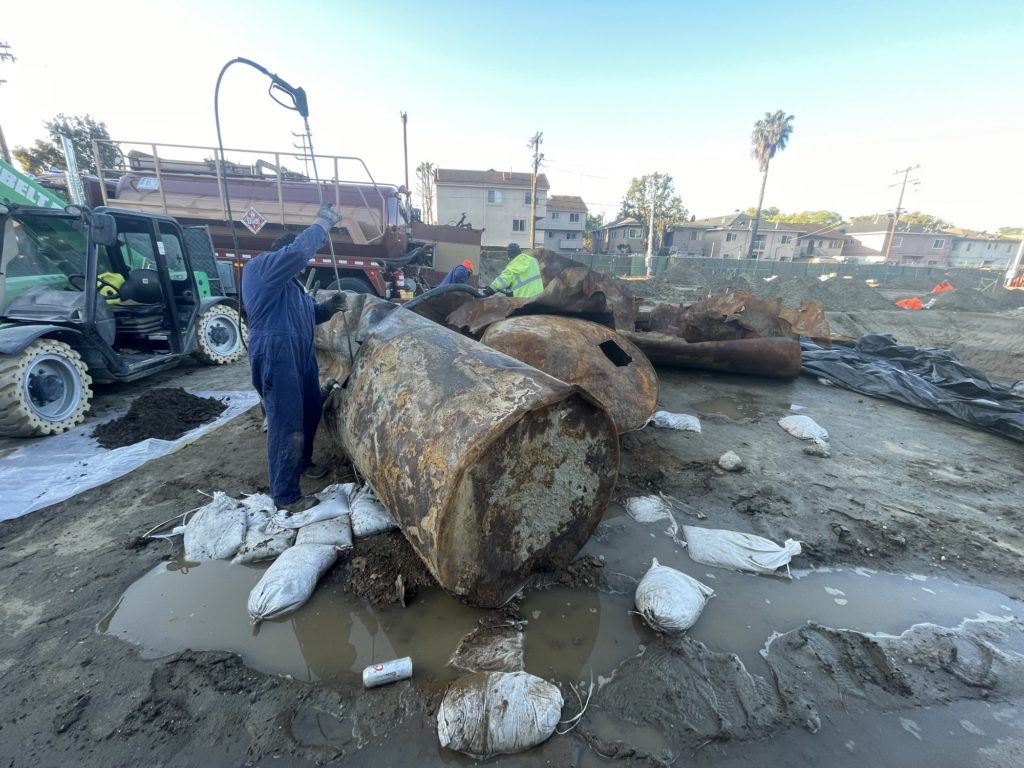
Step 6 – Excavate Around the UST and Install Necessary Lateral Support Shoring Systems
The next step in underground storage tank removal involves excavating the actual soil above and around the UST excavation zone. Contractors with special licenses and certifications follow all trenching and excavation safety standards by the United States Department of Labor, Occupational Safety and Health Administration (OSHA). In fact, per OSHA, a professional geologist or geotechnical engineer may need to prepare a shoring plan for the excavation, providing lateral support to adjacent and nearby structures. The underground storage tank excavation process must also consider the hazardous waste aspect of soil cuttings. Soil cuttings get stockpiled according to field screening results and are disposed of off-site in accordance with the soil excavation management plan.
Step 7 – Remove the Underground Storage Tank and Haul Away all Waste for Disposal
Prior to excavation, the environmental consultant must obtain an EPA waste generation identification number. Similarly, the contractors must complete proper waste transportation manifests and disposal profiles to remove the waste. Afterward, a truck may legally transport all soil and debris off-site, per the soil management plan.
Step 8 – Perform AQMD Rule 1166 Air Quality Monitoring and Confirmation Soil Sampling
In addition to the steps above, environmental agencies require soil contamination testing to take place during UST excavation projects. For instance, when a 1,000-gallon underground tank is extracted, a field geologist must enter the pit, and collect up to six soil samples for laboratory analysis. Moreover, if the bottom of the tank was within proximity to the groundwater table, groundwater contamination testing procedures may then apply as well. The final results reflect on the final environmental site assessment report for UST abandonment.
Step 9 – Backfill the Excavation Pit and Perform Compaction Testing
Upon completion of the underground storage tank excavation and contamination soil testing process, a professional geologist must oversee proper backfilling. In fact, there are soil compaction testing procedures that must comply with local grading regulations. The final data and compaction test results are also to be in the final tank removal report.
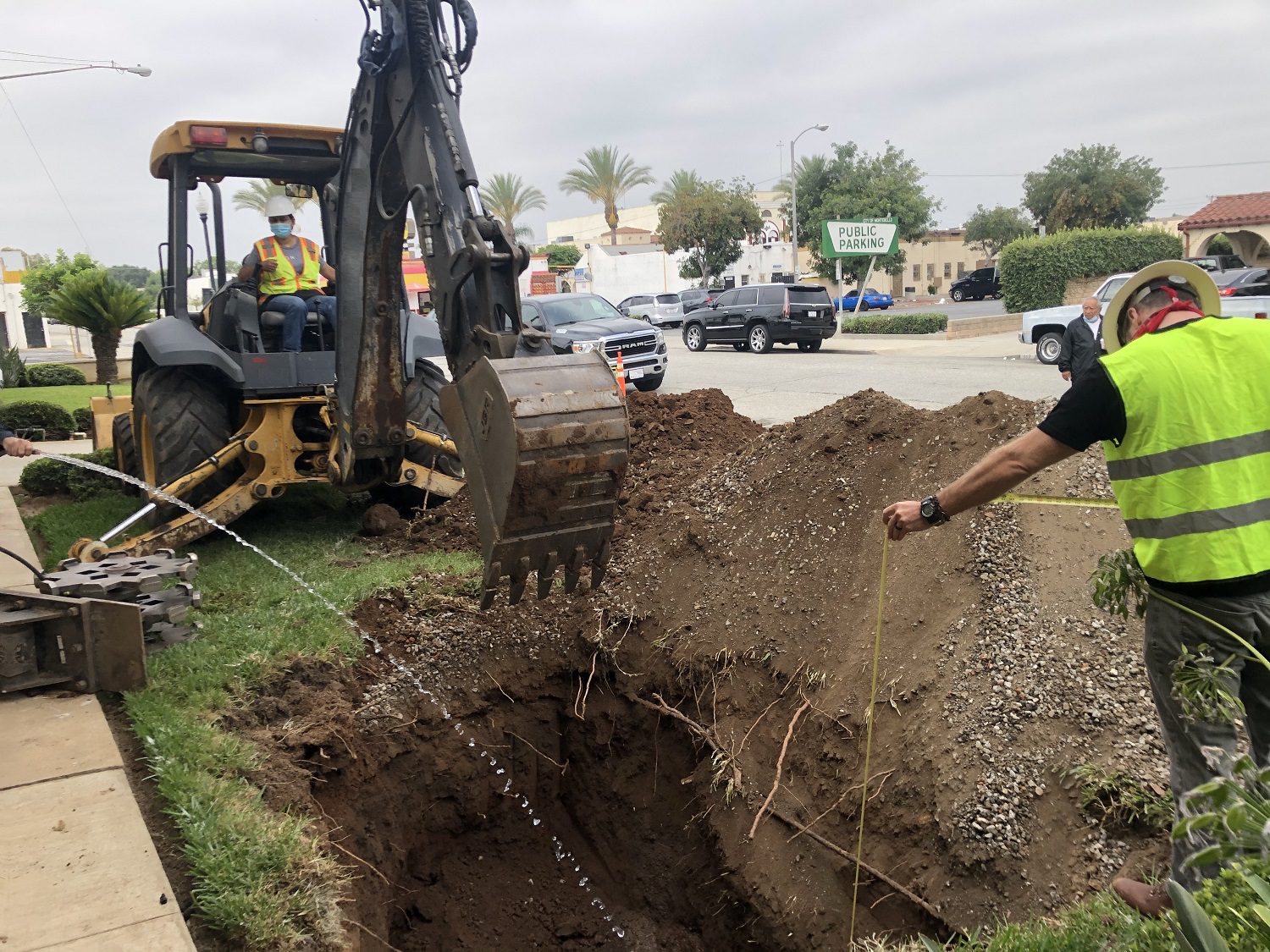
Step 10 – Achieve Complete Regulatory Agency Compliance & Report All Findings
The final report can reach completion once all fieldwork is complete, and the landfilling facilities provide certificates of proper waste disposal. The final UST Removal Report must include a comprehensive description of fieldwork procedures, as well as all soil contamination testing data, and remedial action efforts. Additionally, the report provides evidence of proper permitting, waste classification, and legal disposal.
Step 11 – Obtain a final Case Closure and “No Further Action” Letter from the Agencies
The final Underground Storage Tank Abandonment Report is strictly reviewed by regulatory agencies. In fact, it is not uncommon for multiple agencies to perform a review, and provide comments and feedback. For instance, in the greater Los Angeles area, a UST Abandonment Report is typically reviewed by the Los Angeles County Department of Public Works, as well as the Regional Water Quality Control Board. Moreover, the City of Los Angeles Department of Building and Safety may also require documentation of the review.
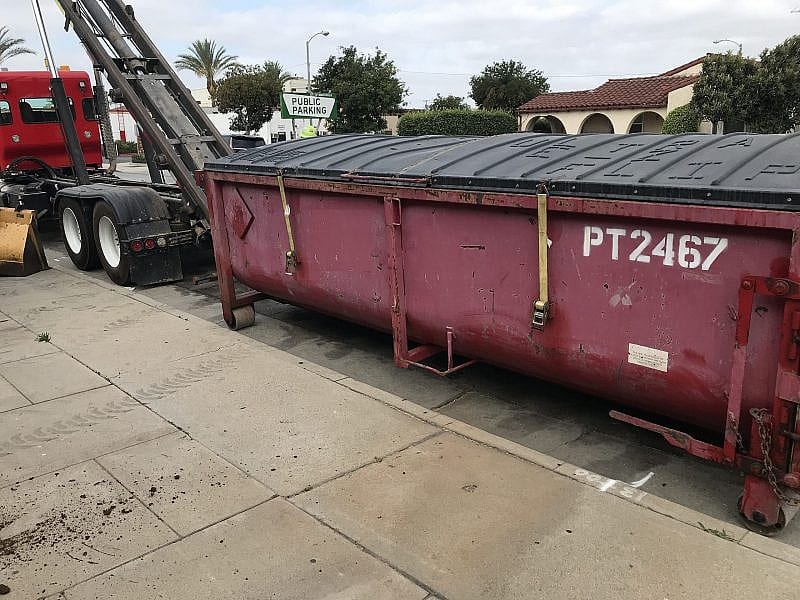
How Do I Know if There is an Underground Storage Tank?
In most cases, the presence of an underground storage tank is known. If it’s not already in-use for commercial gain, a UST is usually identifiable by fill-ports, a concrete pad, and product piping. Nonetheless, there are cases where property owners aren’t aware of older USTs underlying a lot. But records from a Phase 1 Environmental Report, Transaction Screen Assessment, or Desktop Environmental Review may bring them to light. For instance, the Phase 1 ESA process entails a review of building department records, which can uncover a prior gasoline station UST and associated soil contamination risks. Additionally, there may not be any records of UST abandonment. As a result, the recommendation of a Phase 2 ESA from the Phase 1 ESA is likely to occur, to address the tank. Accordingly, the Phase 2 Environmental Assessment is likely to include a geophysical survey to identify the underground storage tank removal location.
What to Do if You Find a UST?
When a Phase II Environmental Report finds a UST, the proper course of action is to register and remove the tank as early as possible. A professional environmental and geological construction group can report the UST to the State’s Environmental Report System and begin the permit and planning tasks. The sooner these tasks are done, the less costly the project is likely to be. After all project permits and prerequisites are completed, the contractor may commence with the underground storage tank excavation work. The ultimate goal is to achieve case closure and obtain a “No Further Action” letter from the oversight government agency.
Mandatory Environmental Testing
Government agencies require environmental soil sampling in the areas under each UST. This process is “confirmation soil sampling,” and occurs under the professional responsibility of a geologist or engineer. For instance, four to five soil samples are collected, and laboratory results apply to determine the possibility of a leak. Each agency administers its own action levels for underground storage tank removal processes. In theory, slight contamination is allowable. However, if concentrations exceed the action levels, remedial action will be a requirement by the agency. Soil contamination can be cleaned up via impact source removal remediation.
Soil Contamination Excavation and Remediation During Underground Storage Tank Removal
Typically, soil contamination remediation during UST removal projects occurs in the form of continuous dig-out and disposal. This cycle may repeat up to three or four times before the regulatory agency allows back-filling or closure. On the other hand, if the contamination is continuously apparent above action levels after multiple confirmation cycles, the agencies will allow back-filling, but not close the case. Consequently, the agency will likely require environmental site assessments and other methods of long-term remediation. For example, back-filling the pit, and then implementing soil vapor extraction to clean the deep contamination.
Soil Management Plan for Underground Tank Removal
Oftentimes, the recommendation for a UST removal project comes along with a Soil Management Plan, as a pre-requisite. This is because tank removal projects are typically associated with soil contamination and the generation of waste that needs special treatment. For instance, a Soil Excavation Plan may outline the process by which lateral support and inerting must occur, for safety purposes. Furthermore, the Soil Management Plan provides the optimal strategy for UST extraction, transportation, and disposal. The purpose is to complete the project efficiently and in accordance with environmental compliance laws.
Understanding the Underground Storage Tank Removal Process
It is important to understand that many agencies refer to an existing underground storage tank as a potential pollution liability. Similarly, investors and lenders consider in-place tanks a potential encumbrance and risk factor. Unless a UST is in current operation and is certifiably in good condition, best practices suggest removing it sooner rather than later. In fact, in some cases, regulatory agencies impose a fine for violations of underground tanks without registration or use in good standing. Although each property is different and owners typically have different development strategies. Thus, Geo Forward recommends consulting with an environmental professional to understand the underground storage tank removal process. Professional consultation aims to achieve maximum efficiency and clearance of any environmental compliance violations.
Environmental Compliance for Underground Storage Tank Excavation
Various regulatory agencies require environmental soil sample analysis immediately after the underground tank removal task. The sample collection occurs immediately after the UST excavation, or when the tank leaves the original subsurface position. In fact, regulatory agencies prefer to oversee the sampling process, to verify that all samples are instantaneous and representative. Furthermore, the laboratory prepares a chemical analytical report for geologists to review. The professional geologist applies environmental screening levels to determine whether any further remediation by excavation is necessary or not. Alternatively, soil and groundwater contamination remediation may commence after backfilling with clean soil, using other remedial action processes.
How Much Does it Cost to Remove an Underground Storage Tank?
Upon discovering a UST on-site, most landowners immediately ask “how much does it cost to remove an underground storage tank.” The cost varies on a case-by-case basis and strongly depends on site-specific information. For example, the location and jurisdiction of the site, the content of the UST, size, and quantity of tanks, tank material, whether there’s contamination or not, etc. As a result, the average costs for underground storage tank removal can vary between $10,000 and $70,000 (or more). Moreover, the local environmental agency’s UST compliance criteria have a great influence on cost. This is because some oversight agencies have stricter environmental laws, more requirements, and higher permitting fees, whereas others can be lax.
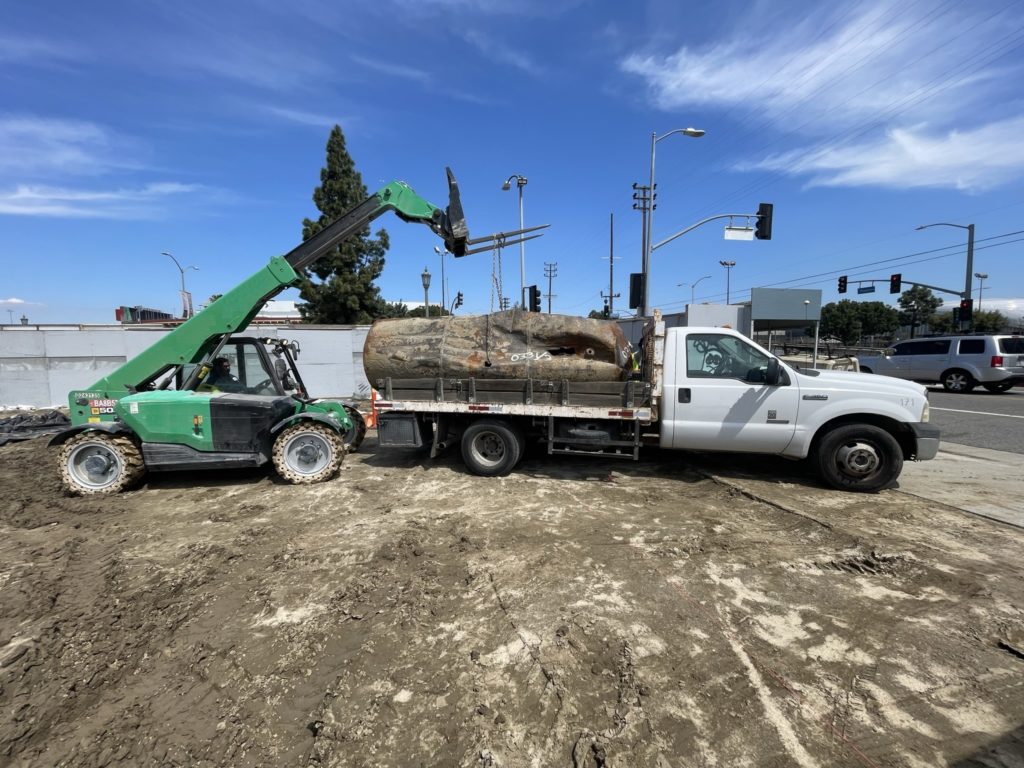
Costlier UST Removal Scenario
For instance, a Boyle Dayton LA UST located on the public right of way in San Diego County, California will require an extraordinary amount of permits. Multiple agencies are likely to require oversight. Additionally, the professional geologist and environmental contractor may have to spend more time coordinating the agencies’ prerequisites for fieldwork. For example, AQMD 1166 permits, soil excavation management plans, public right-of-way encroachment permits, temporary retaining walls or shoring systems via a geotechnical engineer, and more. Afterward, a comprehensive field inspection process and intrinsic environmental engineering report can also occupy more of the geologist’s time. The goal is to achieve site closure and a “No Further Action Letter.” Thus, the agencies’ requirements must be met at all costs. Accordingly, the cost of the project will be on the higher side.
Less Costly UST Excavation Scenario
On the other hand, a single-station Bowser underground storage tank excavation project on someone’s private residential property in Memphis, Tennesse, may require fewer prerequisites and agency oversight. Based on the conditions of the site and the underground tank excavation criteria, there may be no other requirements, but for a UST removal permit and report. Thus, the geologist and contractors are free to remove the UST under industry standards and agency guidelines, for a much lesser cost.
Sources:
California State Water Resources Control Board, Regional Water Quality Control Board UST Registry
LA County Department of Public Works UST Registry and Excavation
Los Angeles Fire Department UST Abandonment Procedures
L.A. Fire Department Underground Storage Tank Removal Guidelines
San Diego County UST Removal Plan Check
Texas State Commission on Environmental Quality USTs
United State Environmental Protection Agency Guidelines for Abandoning Underground Tanks

